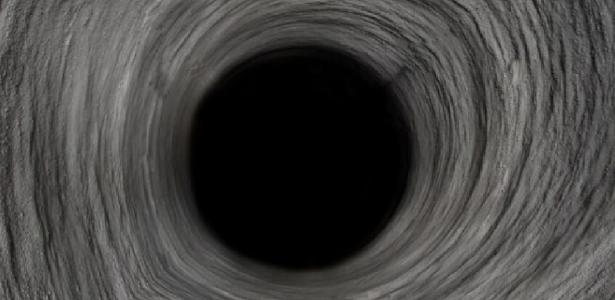Scientists capture the sound of a black hole devouring a star; Hear
3 min read

The Massachusetts Institute of Technology (MIT) made a rather interesting sound: a representation of a black hole devouring a star orbiting it. To create the sound, X-ray echoes of light were used, which are emitted when the black hole pulls gas and dust from the star. The 13-second video sparks curiosity about how the mysterious celestial bodies work.
The study published in the Astrophysical Journal, which was published on the official website of the institute last Monday (2), brings another advance in knowledge about these phenomena. These findings could help reveal how supermassive black holes can shape the formation of entire galaxies by ejecting cosmic particles.
This type of celestial body is known to act as an extremely powerful gravitational well in spacetime. Anyone who has seen Interstellar, a feature film about space released in 2014, has a cinematic view of the shimmering Gargantua, the black hole in Movie. But according to the Massachusetts Institute of Technology, these celestial bodies are essentially dark.
It only lights up its intense surroundings when it swallows a star. This happens when a black hole pulls gas and dust from the star it orbits and can emit intense bursts of X-ray light.
How is the sound possible?
The project brings people closer to these strange cosmic motions and makes it possible to hear what might be the ‘sound of a black hole’. Of course, from light years away, the sound was not captured directly. It’s a simulation that uses the same X-ray echo from a swallowed star and turns it into audible sound waves.
The initiative is led by Irene Kara—co-author of the article and a professor at MIT—jointly with education scholars and a musician From MIT, Kyle Kane and Ian Condry.
You are curious? So it is worth listening to:
To understand the movements shown in the video, know that the central white circle indicates the location of the black hole’s event horizon. Echoes of light are color coded at their observed frequency.
The simulation uses low-frequency light to match a low-pitched sound (ie, bass).
bat technology
Keeping track of how a black hole evolves while devouring other stars is a challenge. And the way scientists found it was inspired by bats. Mainly in the strange way they communicate.
When one of the pack members sends a call, that sound can bounce off obstacles, reaching the other bats in an echo format. The time it takes for the echo to arrive depends on the distance between the bats. This is important because it allows the animal to get a clearer mental map of its surroundings.
In the same way that bats emit echoes, Kara and her team of scientists use X-ray echoes to map the vicinity of a black hole.
To do this, MIT advocated the use of a new piece of equipment called an “echo machine.” It works to search for black hole echoes in satellite data.
In this research, scientists have discovered eight black holes – “small” supermassive black holes – in the Milky Way. Previously, only two were known.
“By understanding the explosions in these small, nearby systems, we can understand how similar explosions in supermassive black holes affect the galaxies in which they reside,” Kara explains.
Using the machine to compare the echoes, the team was able to build a picture of how the black hole evolved during the explosion. The step by step is basically the following.
First, the orb goes through a “solid” state. In this step, a corona of photons – a region of high-energy plasma – is emitted along with a jet of relativistic particles at nearly the speed of light.
Then, at a certain point in its existence, the black hole emits a final high-energy flash. This occurs before the transition to the “smooth” low-energy state. It might be a sign that the celestial body’s aura had widened, ejecting a final batch of high-energy particles before disappearing completely.
The time the telescope receives light from the corona, compared to the time it receives the X-ray echo, gives an estimate of the distance between the corona and the accretion disk – a structure made up of material orbiting around the central body. From there, analyzing how these delays change could reveal how the black hole evolves as it consumes stellar material.

“Entrepreneur. Music enthusiast. Lifelong communicator. General coffee aficionado. Internet scholar.”


:strip_icc()/s04.video.glbimg.com/x720/11792055.jpg)

:strip_icc()/s03.video.glbimg.com/x720/11786998.jpg)